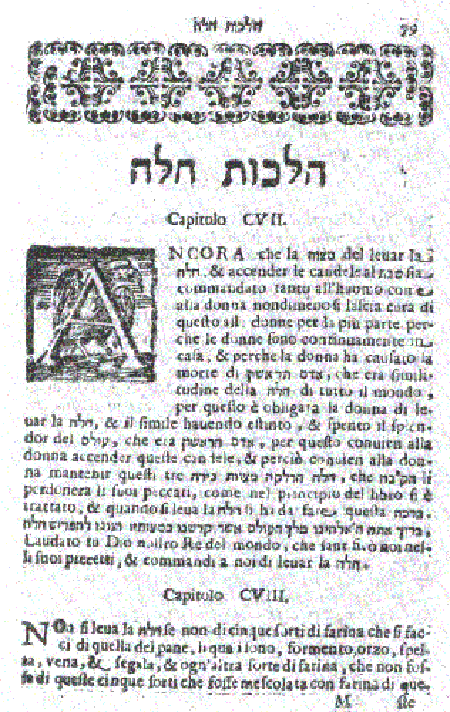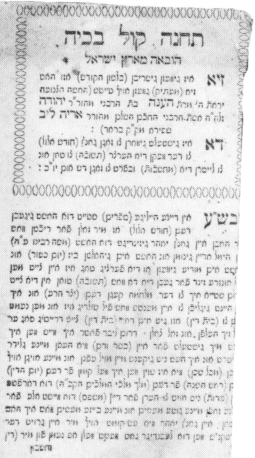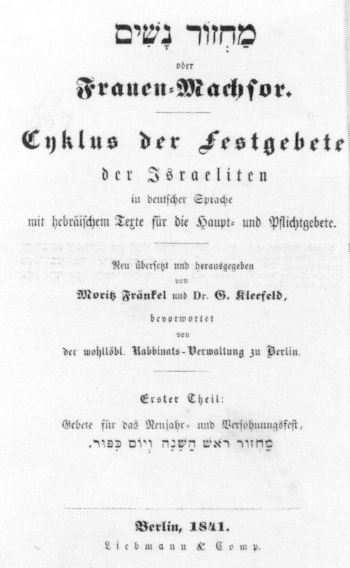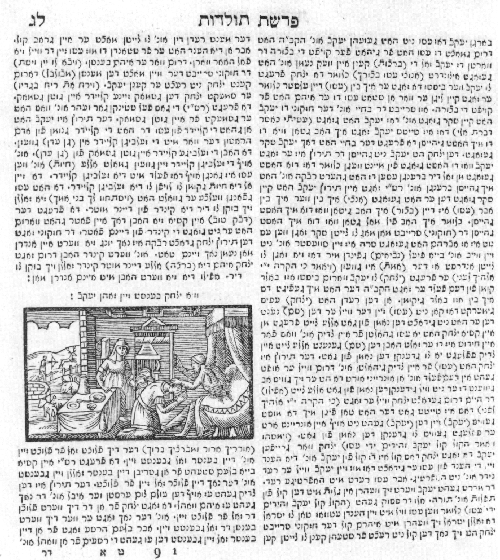Women & Jewish Books: Books for Women
Professor Salo Baron has suggested that the best measure of the degree of a Jewish community's assimilation in its host culture is the extent of its use of the vernacular for sacred purposes. The publication of Mitzvot Nashim (Laws for Women) with an Italian translation in Padua in 1625, points to the high degree of Italian Jewry's cultural integration and linguistic assimilation at the beginning of the seventeenth century. The Library's volume would not only be of interest to the cultural historian, but would also be an important source for the historian of religion for a consideration of which laws are stressed and how the subtleties of translation might suggest the nature of the assimilation. It might also serve the student well to compare this collection with another published in Italy a century and a half later, also with an Italian translation, Sefer Eshet Hayil (Book for the Woman of Valor), Livorno, 1782.
 |
A collection of tehinnot (penitential prayers) published in several places at various times, sewn together by a pious Jewish woman for her personal use, is an anthology of liturgical works written by women. Consider one, Tehina Kol Bekhiya (A Penitential Prayer: Sound of Weeping), "brought from the Land of Israel." The prayer is in Yiddish. "Written in the Holy Tongue, it was translated by the God-fearing and virtuous Henna, daughter of Rabbi Judah, of blessed memory, wife of the rabbi and sage, Aryeh Leib Shapiro of the city Brod." It is to be said the whole month of Elul (the month preceding the High Holy Days) "to arouse the hearts to repentance and to purify the thoughts, and should be recited especially on the Day of Atonement":
Lord of the Universe. In your holy books it is written that you have given us the month of Elul, so that we may repair what we have destroyed by sinning during the year. You took Moses, our teacher, peace be unto him' into heaven and kept him till the Day of Atonement, and informed him that the forty days [between the first day of Elul and the Day of Atonement] is a time when the sins of those who repent are forgiven. In these days I rise as one ready to do battle with the evil inclination, and I see myself as one who owes money and is brought to court, and the court grants him thirty days to help himself by paying the debt. Dear Father, if I would stand before an earthly tribunal, how my body would shiver, how my mouth would remain shut, how I would not be able to lift up my eyes. How much more so, when I stand on the Day of Atonement, on Yom Kippur, before the King of Kings, the Holy One, Blessed be He!
A simple, direct statement to a stem judge who is yet an intimate friend.
 |
A liturgical publication of a different order is a Frauen-Machzor (Holiday Prayer Book for Women), published in Berlin, 1841. "Newly translated into German" and bearing the approbation of the Berlin Rabbinical Organization, it is in the proper, if staid language of public worship. Each of the above is appropriate to its audience: The Sound of Weeping for the unsophisticated pious Yiddish- speaking women of Eastern Europe, Frauen-Machzor for the wordly, linguistically assimilated ladies of the West.
 |
The women's book par excellence, a retelling of the Pentateuchal narrative in Yiddish, made vivid by the use of midrashic tales and medieval commentaries, is the Ze'enah U-re'enah (Go Out and See). Written by Jacob ben Isaac Ashkenazi at the end of the sixteenth century, it has since gone through well over two hundred editions. (The second edition was published in krakow in 1620; the place and date of the first edition are unknown.) It became standard reading for Jewish women in Central and Eastern Europe, who became acquainted with biblical tales and persons not through the Bible text but from this exegetical retelling of it. It was one of the very few religious books to have illustrated editions, and its woodcuts, especially those of the Sulzbach printings-the Library has both 1798 and 1836 illustrated editions-conveyed directly to generations of Jewish women who saw them, and children to whom they were shown, how people of the Bible looked and acted.
 |
Sources:Abraham J. Karp, From the Ends of the Earth: Judaic Treasures of the Library of Congress, (DC: Library of Congress, 1991).


